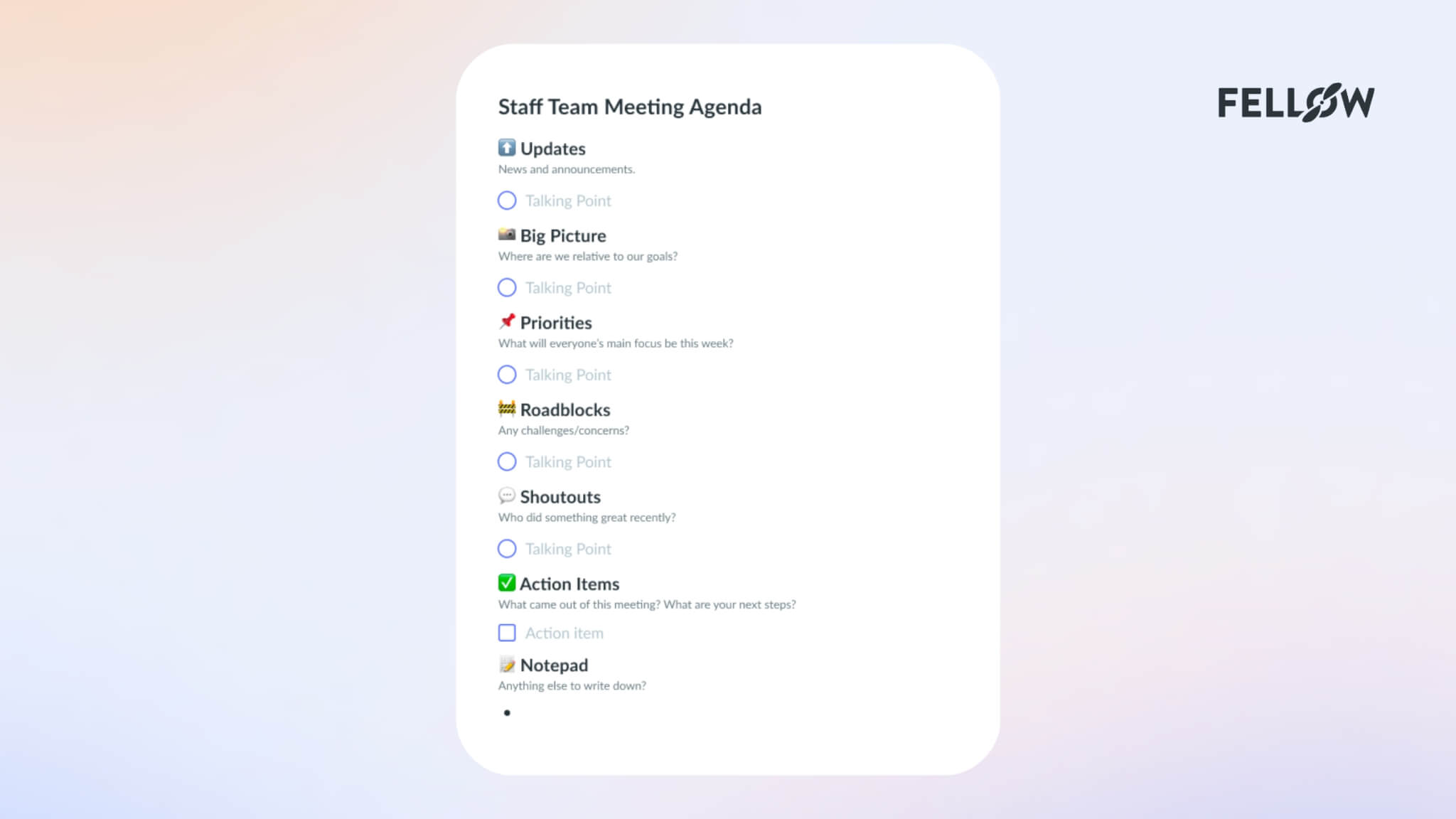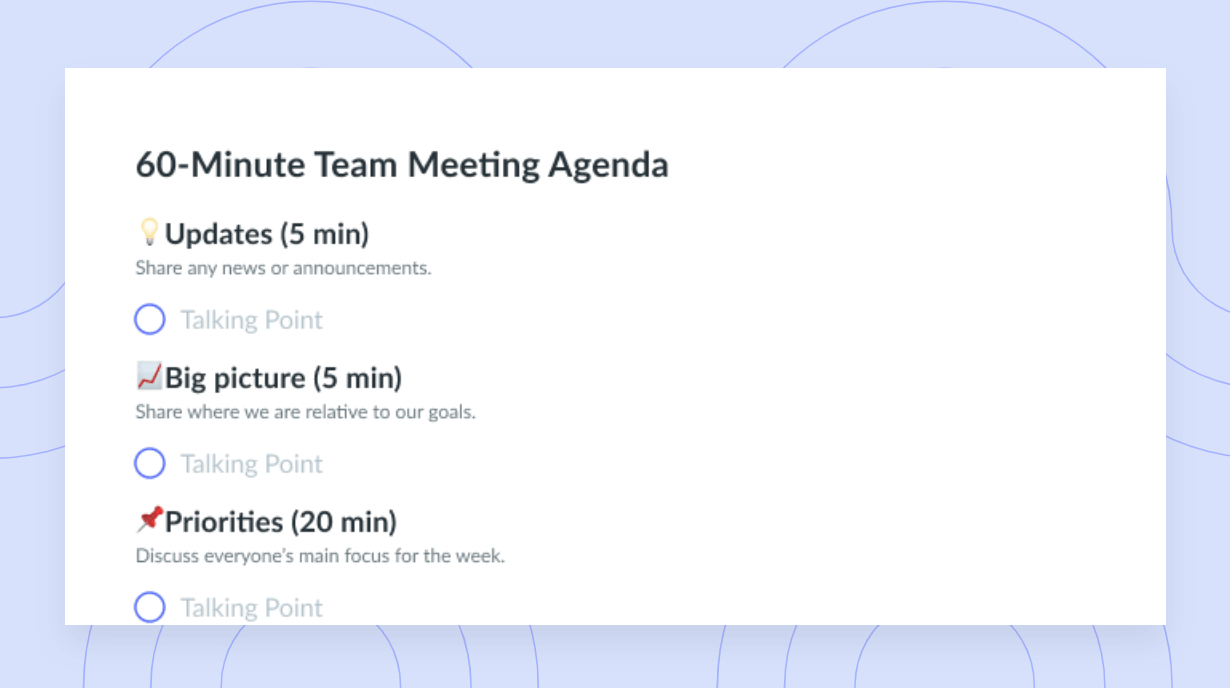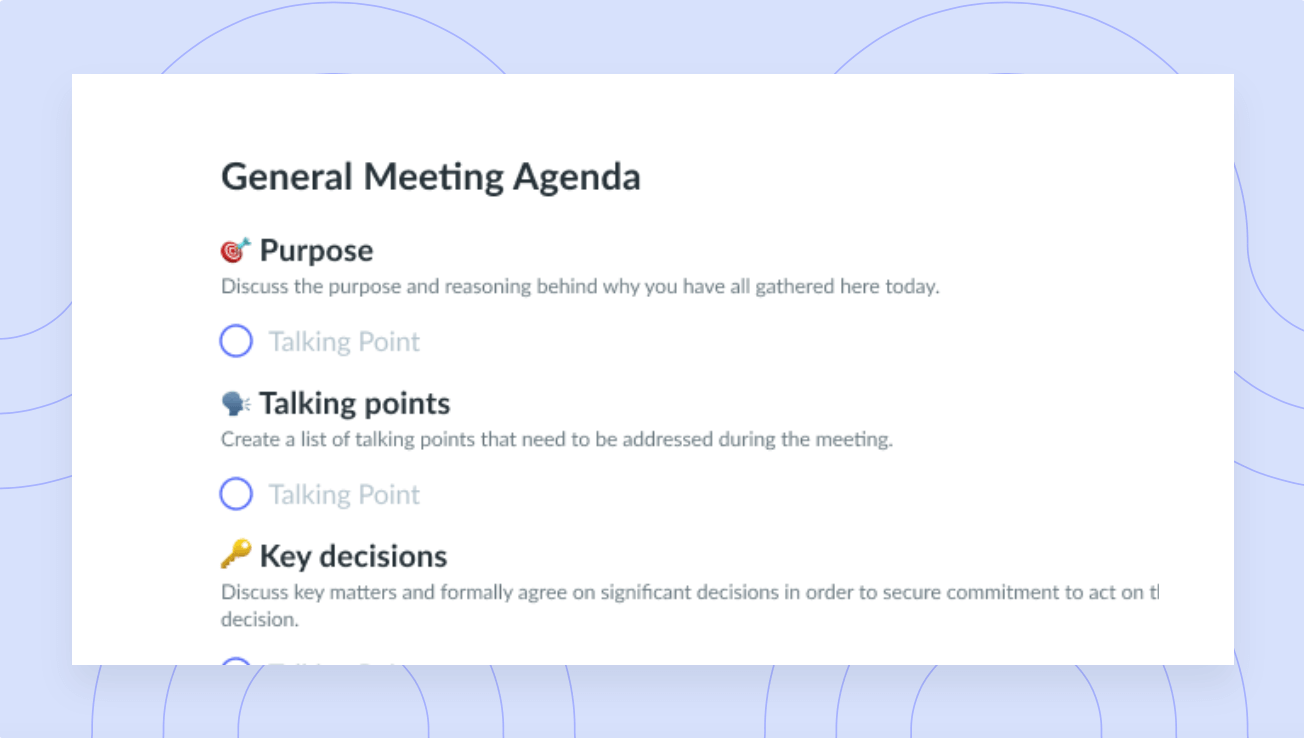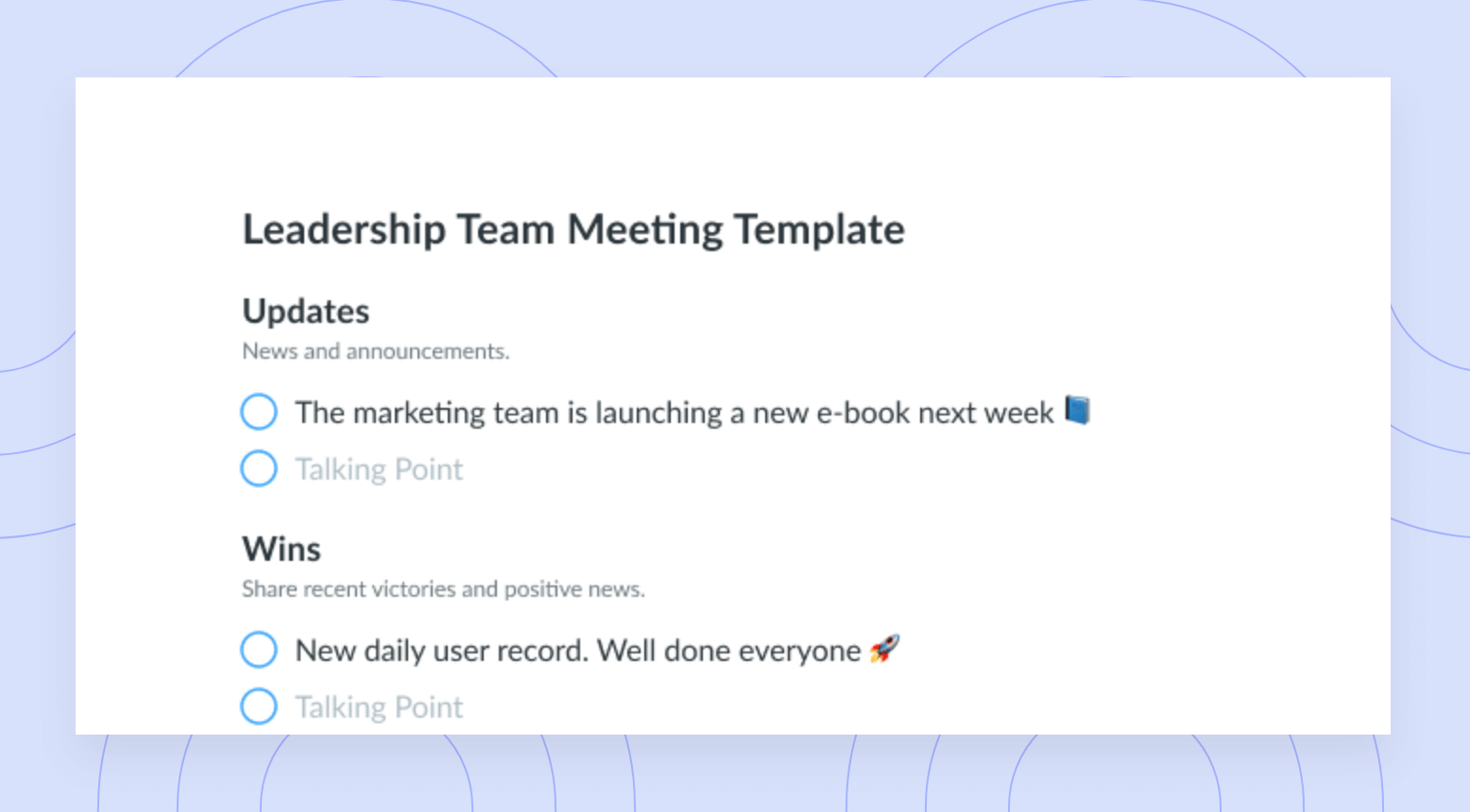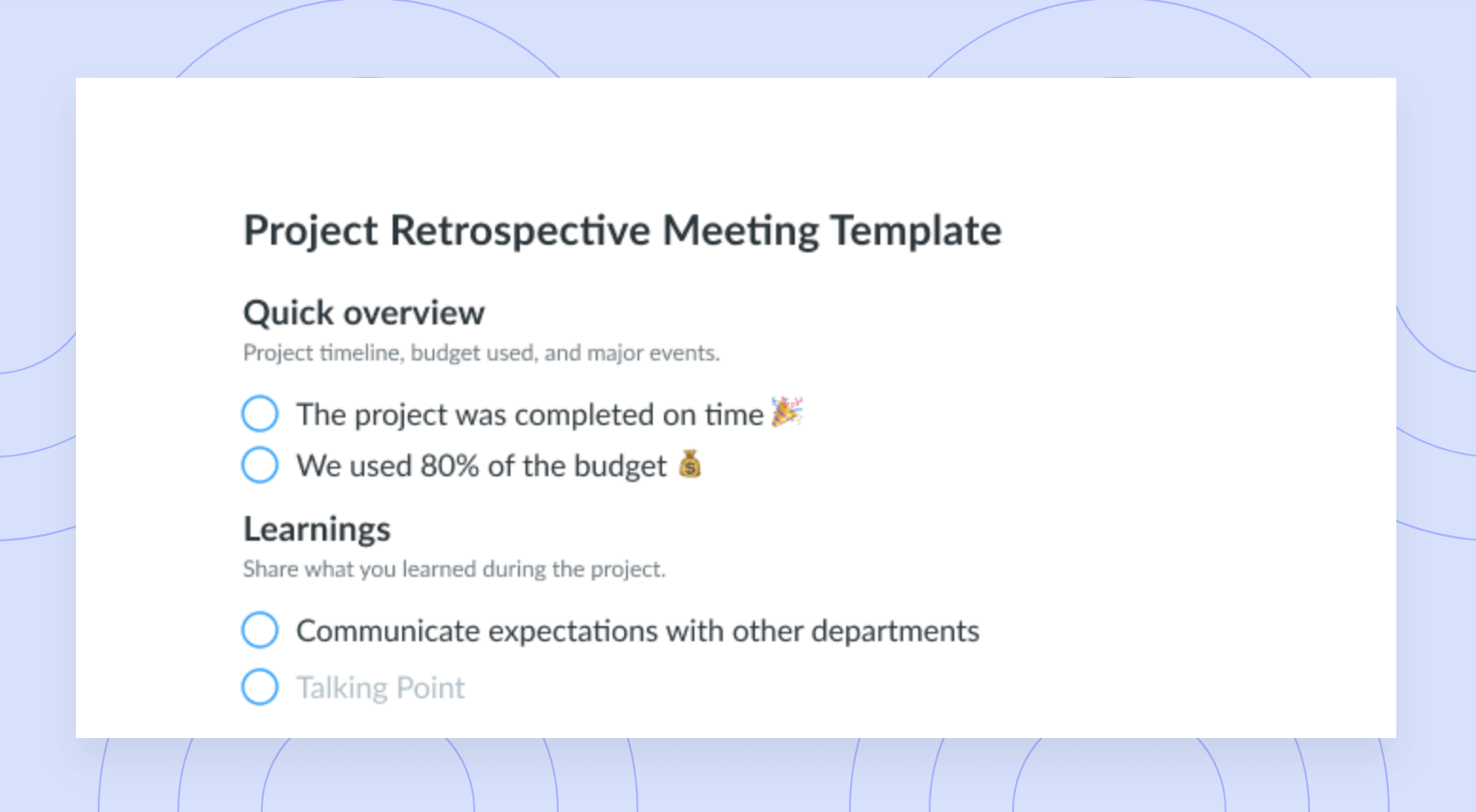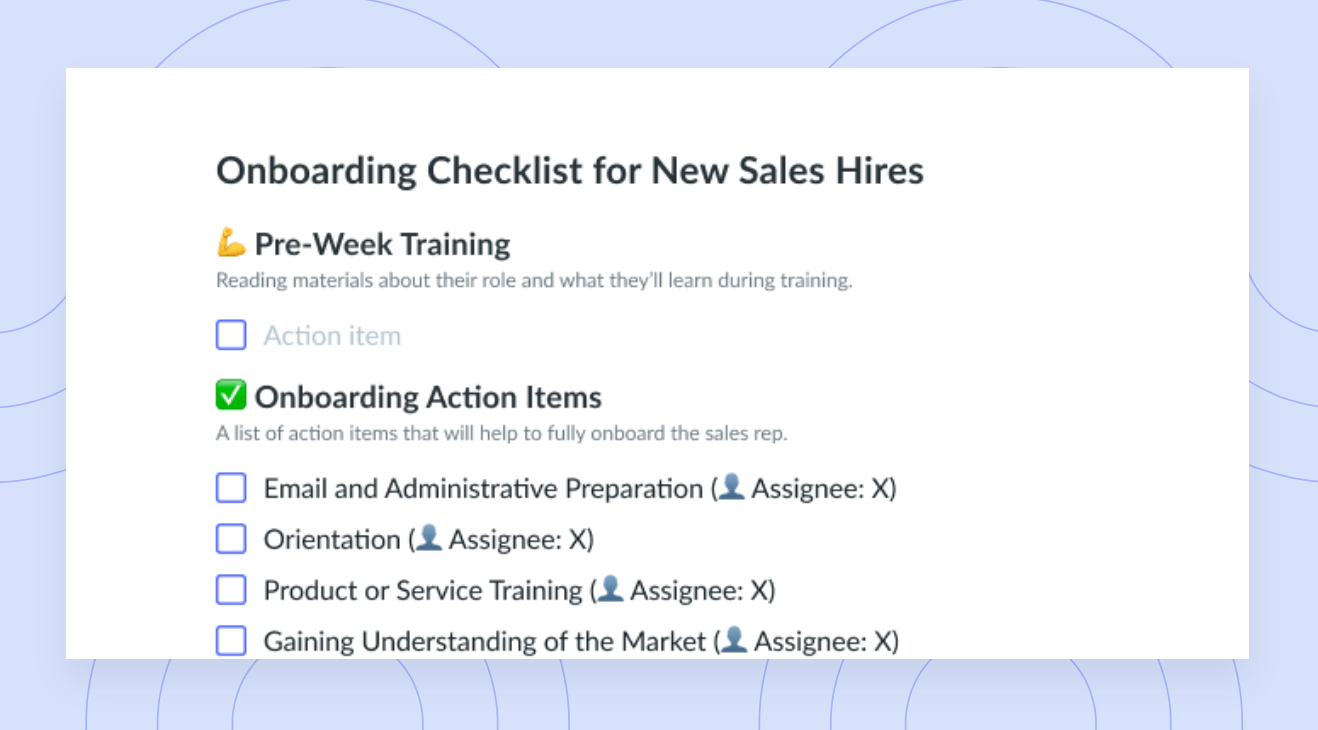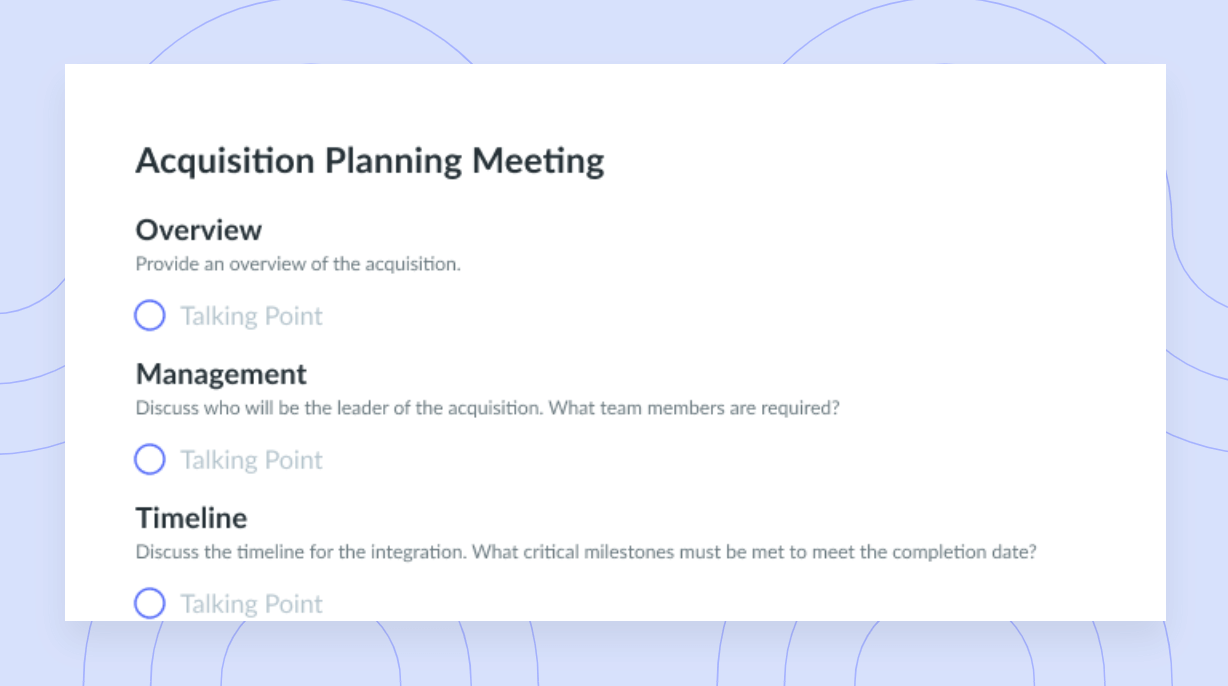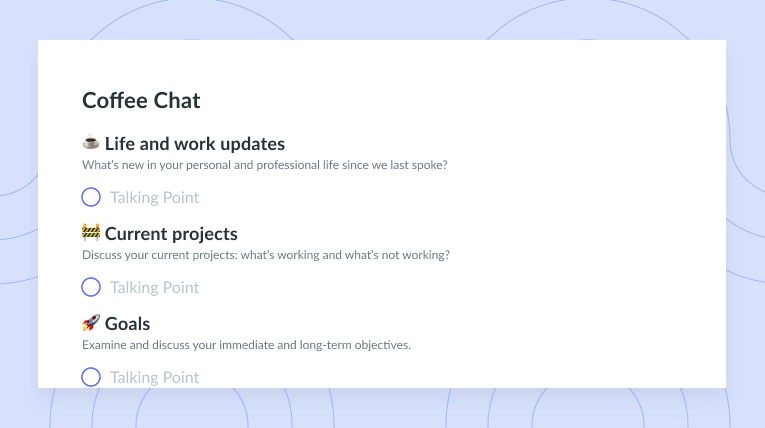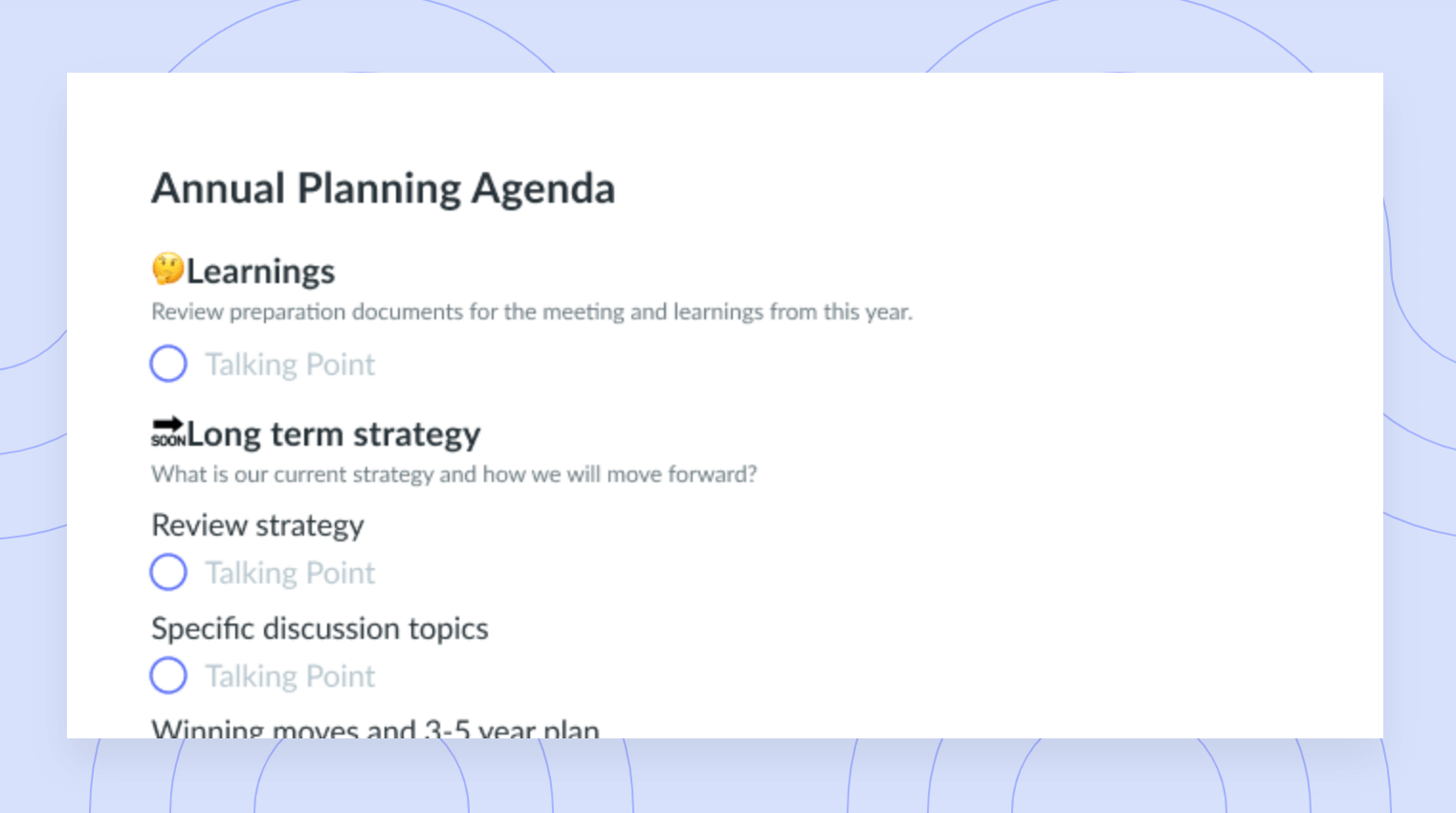The Best Meeting Planning Checklist on the Web
Get the most out of your meeting by planning ahead. Check out our meeting planning checklists that will help you and your team use your time wisely, in the most productive way possible.
As a manager, you already know that planning ahead of time is essential to a great meeting. All of us have had to wing it a few times in our careers and everyone knows that feeling of anxiety when we’re put in that position (which never feels great).
Coming to a meeting prepared means that you’ll walk in (or log in) confidently, ready to be as productive and as efficient as you can be. The best way to do this? Creating a meeting planning checklist.
Using a checklist to plan your meetings is not only going to confirm that you’re prepared but it will also ensure that you are using yours and your team’s valuable time in the most effective way possible.
Because a meeting planning checklist is your golden ticket to a productive meeting, Fellow has created the ultimate guide to the meeting planning process.
Planning checklists are going to accelerate you and your team in achieving your organizational goals. Keep scrolling to see what all the buzz is about…
(You’re going to want to send this checklist to your team!)
✅ Meeting planning checklist
Before the meeting
There are a few things that you are going to want to cover for your meeting planning checklist so that you cover all your bases in a timely and effective manner.
Think about getting ready to host a dinner party. You can’t just throw a recipe together on the spot, after your guests have arrived. Imagine the stress of realizing that you didn’t have any parsley or cumin or cracked pepper!
You need to make sure you prepare all of the ingredients well in advance and start planning the steps you need to take so that dinner is ready on time.
This is truly and directly related to preparing the ingredients for a great meeting.
Now that we’ve gone through a dinner analogy and we’re all a little hungry, let’s check out the items that you should include in your meeting planning checklist:
1 Define your meeting goal
Why are you meeting? Is this a planning session, a session to mitigate an issue, a brainstorming session, or a meeting where a major decision needs to be made? It’s really important that you can clearly identify and communicate the purpose of the meeting before anything else. Once you know what you and your team are trying to achieve, you can begin to work towards your goal.

Show up prepared.
Save time and have efficient meetings with a collaborative meeting agenda tool where everyone can contribute their talking points, questions, action items, and more!
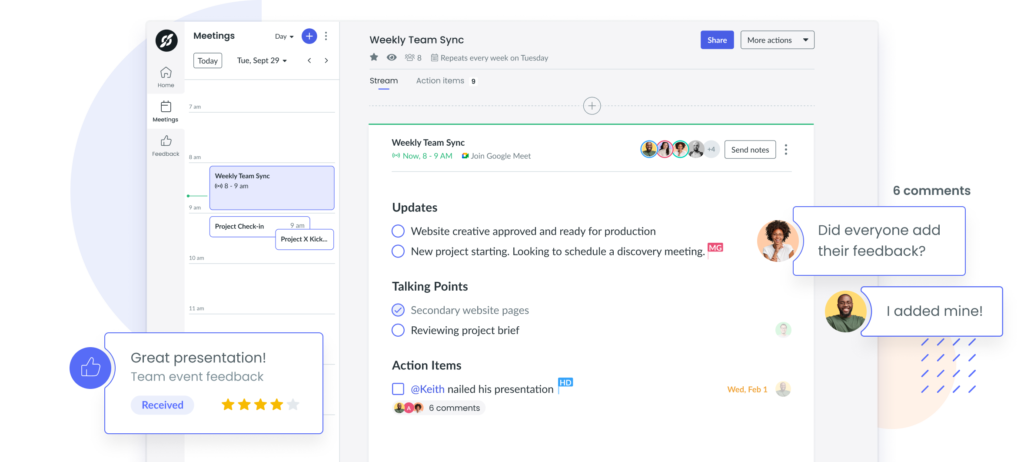
2 Decide who should be there
Who needs to be present for this meeting and why? Make sure that you are carefully selecting participants and not just inviting everyone and anyone so that you cover all of your bases in a lazy way. As you know, everyone’s time is valuable and there’s nothing more frustrating than sitting in on a meeting and noting that it is completely unrelated to you and work. Be thoughtful with your invite list so that you don’t get any negative feedback for wasting your colleague’s time.
3 Collaborate on an agenda
Collaborate on an agenda! Sure, maybe you think you can do it yourself but we all know that teamwork makes the dream work. Collaborating on an agenda is going to allow for everyone’s valuable suggestions to be addressed during the course of the meeting. It’s also going to bring things to your attention that you might not have been aware of.
Check out collaborative meeting agendas from Fellow to see just how effective they are.
4 Provide supporting materials to help people prepare
Send supporting materials or any pre-reading documents that might be valuable to your participants. Try to send these documents a few days in advance to give your team lots of time to go through any reference documents. Hopefully we’ve made it clear that preparation is the key to a great meeting- this also means that your attendees come to the meeting ready to contribute their thoughts, ideas and experiences.
5 Designate one timekeeper
When you give participants specific roles, you’ll increase engagement among participants. Think about rotating roles each meeting so that the responsibility doesn’t always fall on the same person. Designating a timekeeper is going to hold you accountable to stay on topic and on time.
6 Designate one or two note takers
Choose one or two participants to take notes. Taking meeting notes is important for many reasons. Since it would be impossible to catch everything word for word, we need to pick and choose the key information to write down. This allows you and your team to refer back to your meeting notes to remind yourself of important deadlines, decisions or topics that you’d like to address at the next meeting, and if someone has missed the meeting, you have the ability to share your notes and get them up to speed. You now have a historical record for all of the decisions and outcomes that have been produced.
During the meeting
Now that we’ve gone through the preparation portion of the meeting planning checklist, we’ll take a look at what you need for the actual meeting.
Some of the most important aspects of the meeting are finding a means to keep employees engaged, so that you can really optimize on everyone’s valuable thoughts and insights.
1 Start on time
There’s no way to make this more clear: Just start on time! Regardless if there are people missing or arriving late, it’s important that you remain punctual and dependable to begin the meeting at the time planned.
2 State the meeting goal
As previously mentioned, make sure the purpose of the meeting is clear and ensure that you are able to communicate the goal to your team in a clear and concise manner.
3 Start with good news
It’s always a good idea to begin the meeting on a positive note. Start with some good news and make sure that those have been putting in the work are acknowledged. Positive reinforcement is going to encourage your team to keep working hard, knowing that their efforts don’t go unnoticed.
4 Follow the agenda to stay on time
The purpose of a meeting agenda is so that you stay on topic and don’t stray from the important points that you and your team have decided on. Make sure that you really keep to the agenda so that you don’t go over the allocated meeting time and so that you stay focused on the purpose of the discussion.
5 Place new topics on parking lot for next meeting
As other points arise throughout the meeting that may not be on the agenda, have your note taker(s) jot them down so that they can be acknowledged at a later time. We call this the “parking lot technique”. We park ideas unrelated to the topics on the agenda and then revisit them as soon as we are able to. This ensures important points are noted but that you and your team don’t stray from the meeting plan.
6 Take notes
We’ve mentioned that you should allocate one or two note takers for your meeting but it’s also a good idea to take your own notes. Taking meeting notes is going to allow you to record the information from the meeting in your own words and using your own method that makes it easier for you to understand and retain information. Again, this is important for record keeping and for sharing key information with your teammates who couldn’t make it.
7 Highlight decisions made
Highlight the decisions that have been made in a clear way, that can’t be confused. The more straight forward you are, the more productive your team can be in realising the steps that need to be taken to progress the project or initiative you’re working on.
8 Assign tasks to specific people and set a due date
Assign action items to specific people on your team with a due date. This is going to hold people accountable for tasks that need to be completed and allow team members to manage their time appropriately. When individuals “own” particular responsibilities, it eliminates confusion and allows employees to take responsibility.

9 Summarize next steps
Be concise in summarizing the next steps. You can even number and list them out so that there is a clear process for everyone to follow. This way, there’s also no kind of anticipation or waiting required to keep pushing on with the work required to hit your team goals.
10 End the meeting on a positive note
Make sure you thank everyone for their time and highlight the positive things that were accomplished during the meeting. This is going to leave everyone feeling as if this was a good use of their time and that their presence is valued (because it is!).
After the meeting
The last step in your meeting planning process is to follow up with your team. Here are a couple of things that you should include on your follow up checklist.
1 Distribute the minutes as soon as possible
Make sure you get the notes out while everything discussed is still fresh in everyone’s mind! This is going to reinforce the topics that were discussed and it also sets a great example for being punctual and prompt in getting things done. To do this, you can use Fellow’s send notes feature to send the meeting notes via email or Slack.
To learn more about integrating your workflow with Fellow, check out our integrations overview 👇

2 Communicate decisions to people that weren’t at the meeting
It’s especially important that people that were absent from the meeting are made aware of the decisions that have been made. If they apply directly to a specific individual, consider shooting them a separate email with a heads up to check out the action items that have been assigned and to go through the meeting notes for context.
3 Follow up on next steps and offer your help
When you’re approaching due dates for action items, ask your team members to follow up with you and let you know what the progress is and to ensure that tasks will meet their associated due dates. It’s important that your team knows to provide you with these updates, rather than you needing to chase people for the answers! Set this expectation with your team to check in with you a few days before items are due. This way, you can offer your help if anyone is struggling to get things done on time, or simply need a little more guidance.
Closing Thoughts
In this article, we have reviewed meeting planning checklists for the preparation of a meeting, for the actual meeting and for an effective follow up post- meeting. These planning checklists are the not-so-secret ingredient to optimizing your time and team efforts. They are going to allow you to collaborate, brainstorm and come to decisions in an efficient way.
Let’s look at a summarized version of these checklists so that you can review what you’ve learned from this article:
Meeting Preparation Checklist:
1. Define a meeting goal
2. Select participants/who should be there
3. Collaborate on an agenda (aka use Fellow)
4. Provide supporting materials to help people prepare
5. Designate one time keeper
6. Designate one or two note takers
Meeting Facilitation Checklist:
1. Start on time
2. State the meeting goal
3. Start with updates/good news
4. Follow the agenda to stay on time
5. Place new topics on parking lot for next meeting
6. Take notes
7. Highlight decisions made
8. Assign tasks to specific people and set a due date
9. Summarize next steps
10. End the meeting on a positive note
Post-Meeting Checklist:
1. Distribute the minutes as soon as possible (use Fellow’s send notes feature to send them via email or Slack)
2. Communicate decisions to people that weren’t at the meeting
3. Follow up on next steps / remind people of due dates + offer to help if necessary
Try implementing these checklists with your team and watch your collective productivity and time management thrive. If you found this article helpful, share the wealth with a colleague or a friend. From all of us at Fellow, thanks for stopping by and we look forward to providing you with your next engaging read!
